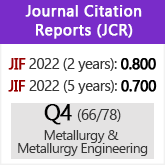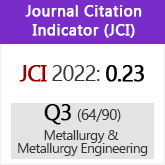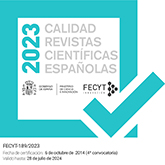Oxidation resistance of laser cladding with Ni-Cr-Al alloys on carbon and austenitic stainless steels
DOI:
https://doi.org/10.3989/revmetalm.1995.v31.i2.971Keywords:
Laser cladding, Superalloys, OxidationAbstract
Laser surface cladding has been carried out by means of a 5 kW CO2 continuous wave laser on both a mild and a stainless steel. A powder injection technique has been used to deliver a Ni-Cr-Al alloy onto the steel molten pool. After processing, samples were analyzed by optical and scanning electron microscopy in order to know the microstructure and composition of present phases. High temperature corrosion resistance tests were done in an oxidant environment at temperatures of 950 °C. Phase transformations and corrosion behaviour are discussed. A general conclusion is the suitability of these alloys to bear oxidation due to the formation of protective oxide layers on their surface.
Downloads
Download data is not yet available.
Downloads
Published
1995-04-30
How to Cite
de Damborenea, J., Conde, A., & Larraz, M. T. (1995). Oxidation resistance of laser cladding with Ni-Cr-Al alloys on carbon and austenitic stainless steels. Revista De Metalurgia, 31(2), 89–96. https://doi.org/10.3989/revmetalm.1995.v31.i2.971
Issue
Section
Articles
License
Copyright (c) 1995 Consejo Superior de Investigaciones Científicas (CSIC)

This work is licensed under a Creative Commons Attribution 4.0 International License.
© CSIC. Manuscripts published in both the printed and online versions of this Journal are the property of Consejo Superior de Investigaciones Científicas, and quoting this source is a requirement for any partial or full reproduction.All contents of this electronic edition, except where otherwise noted, are distributed under a “Creative Commons Attribution 4.0 International” (CC BY 4.0) License. You may read here the basic information and the legal text of the license. The indication of the CC BY 4.0 License must be expressly stated in this way when necessary.
Self-archiving in repositories, personal webpages or similar, of any version other than the published by the Editor, is not allowed.

















